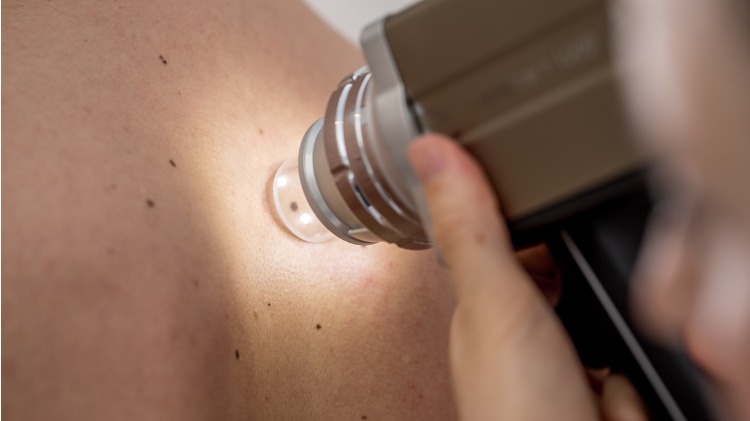Skin Lesion Removal: Complying with Medicare
22 Jun 2018

The aim was to simplify items and reflect best clinical practice. Choosing the wrong item number and/or failing to appropriately document the excision can expose practitioners to financial penalties and, in more serious cases, the imposition of sanctions where the conduct constitutes inappropriate practice.
Case study
In a case that went before the Professional Services Review Committee, a General Practitioner was directed to repay $366,734.71 to the Commonwealth in relation to the rendering of a number of MBS items.2 One of these items was for skin excision, where the practitioner was found to have failed to provide adequate clinical input, comply with MBS requirements and keep adequate records.
Deficiencies identified in the practitioner’s records included failing to describe the lesions and the nature of the wound closure, the patient’s comorbidities or other issues affecting the procedures, such as the patient’s relevant medications, history of wound infections, or any history relating to the use of local anaesthetic.
In relation to some services, the Committee found inappropriate billing of a consultation item for pre-procedural and post-procedural work where a procedural item was also billed. Claiming the consultation item was inappropriate in these instances because there was no discrete clinical content to justify the claim, as all work was part of the procedural service.
Discussion
Since 9 April 2011, the Department of Human Services (DHS) has had the power to audit Medicare services provided on or after that date. DHS may issue a notice to a practitioner, or a person in charge of the practitioner’s records, if there is a reasonable concern that a Medicare benefit that has been paid exceeds the amount that should have been paid. This typically arises where the criteria in the item descriptor are not fully met in order to justify billing under that item.
In the case of audits concerning skin cancer lesion removal, DHS seeks confirmation that practitioners have met the histopathological requirements, and that the lesion size and location correlate strictly with the item descriptor. As illustrated in the above case study, adequate and contemporaneous records are therefore vital.
Things to bear in mind
When rendering a service under Medicare involving skin lesion removal, it is good practice to keep in mind the following when documenting the excision:
- Measure and record the size of the lesion before removal. When determining lesion size for MBS item selection, calculate the necessary excision diameter (or defect size) by the average of the width and length of the skin lesion plus a clinically appropriate margin of healthy looking tissue required with the intent of complete surgical excision. Updated evidence-based clinical practice guidelines for the definitive excision margins for primary cutaneous melanoma3 are now available to assist skin cancer practitioners.
- Ensure histological confirmation is received before a skin malignancy item is claimed.
- Retain histological reports and photographic or other supporting evidence. Photographs should include scale.
- An episode of care includes both the excision and closure for the same defect, even when excision and closure occur at separate attendances.
You can get more information on skin lesion and biopsy items from the education guide available on the DHS website: humanservices.gov.au.4
In cases where you think you may have received an incorrect Medicare benefit, or if you have received a notice to produce documents from Medicare, you should seek assistance immediately from your medical defence organisation.
Important information for General Practitioners treating skin cancers
MDA National’s risk categorisation of skin grafts and flaps has been reviewed and amended from Level 2 GP Limited Procedures and Level 3 GP Procedural as follows:
- Single stage local flaps for the removal of skin lesions and defect repairs are covered under the Level 1 General Practice Non Procedural category with no anatomical restrictions on the areas of the body upon which such flaps can be performed.
- Free grafting (split skin) and full thickness grafts are also covered within the risk category Level 1 General Practice Non Procedural category with no anatomical restrictions.
- GP Members undertaking skin cancer treatments on the face will be covered under the Level 1 category for administering facial nerve blocks including supraorbital, infraorbital, submental and peripheral Trigeminal nerve blocks.
It is important to be aware that it is a requirement under your Professional Indemnity Insurance Policy that you are acting within your field of practice and have the appropriate training and qualifications for any procedures undertaken.
The details of the changes are outlined on Page 14 in the 2018/19 Risk Category Guide for Medical Students and Medical Practitioners. If you believe the above amendments may impact the risk category in which you are currently indemnified, please contact our Member Services team for further discussion by phone: 1800 011 255 or email: peaceofmind@mdanational.com.au.
References
- MBS Online – Member Benefits Schedule. Available to download from: health.gov.au/internet/mbsonline/publishing.nsf/Content/News-2016-11-01-latest-news-Nov
- Profession Services Review. PSR Director’s Update for November 2017: PUR 917. Available at: psr.gov.au/case-outcome/psr-directors-update-november-2017
- MDA National. Medico-legal Blog. Melanoma in Situ Given Wider Berth in New Excision Guidelines.
- Department of Human Services. Education Guide – Skin Lesion Excision and Biopsy Items – Basic Principles for Claiming Under Medicare. Available at: humanservices.gov.au/organisations/health-professionals/enablers/education-guide-skin-lesion-excision-and-biopsy-items-basic-principles-claiming-under-medicare

Doctors, Let's Talk: Setting Boundaries At Work
A conversation with Nicola Campbell, Psychiatry Registrar, that explores the necessity of setting professional boundaries as a Junior Doctor.
07 Dec 2022

Doctors, Let's Talk: Your Support Network Is Your Net-Worth
A conversation with Nidhi Krishnan, Paediatric Registrar, that explores the value of building a strong network as a Junior Doctor.
07 Dec 2022

Doctors, Let's Talk: Are Retreats Worth The Money?
A conversation with Dr Emily Amos, General Practitioner, International Board Certified Lactation Consultant, and registered mindfulness teacher, that explores the utility of mindful retreats and self-care among Junior Doctors.
07 Dec 2022

Doctors, Let's Talk: Is Quitting Medicine Ever The Answer?
A conversation with Dr Ashe Coxon, General Practitioner, career counsellor, and founder of Medical Career Planning, that explores the issue of dealing with career uncertainty as a Junior Doctor.
07 Dec 2022


